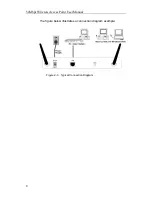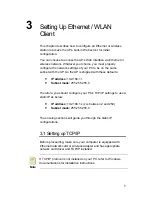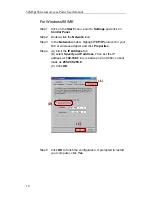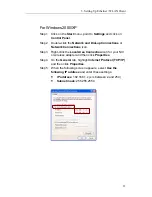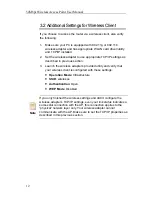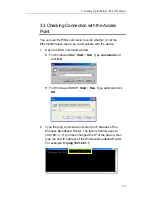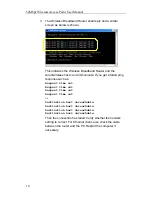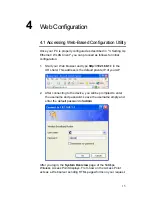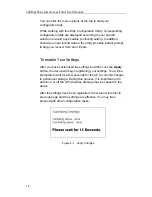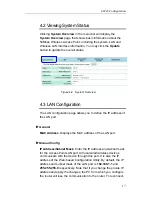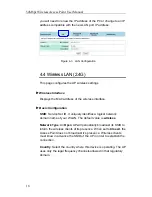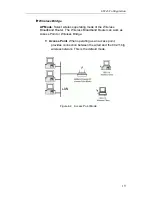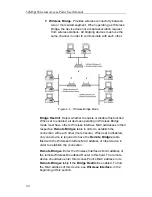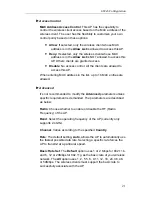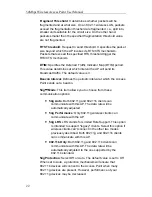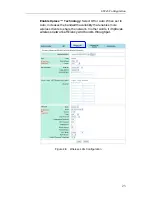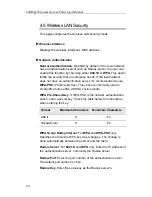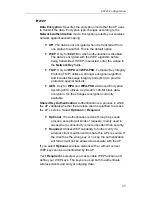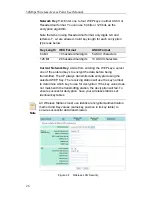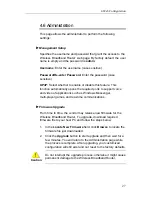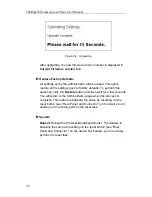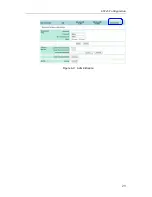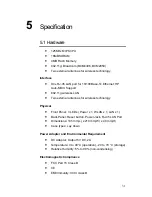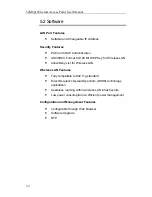
54Mbps Wireless Access Point User Manual
22
Fragment Threshold
:
It determines whether packets will be
fragmented and at what size. On an 802.11 wireless LAN, packets
exceed the fragmentation threshold are fragmented, i.e., split into,
smaller units suitable for the circuit size. On the other hand,
packets smaller than the specified fragmentation threshold value
are not fragmented.
RTS Threshold
: Request to send threshold. It specifies the packet
size beyond which the AP invokes its RTS/CTS mechanism.
Packets that exceed the specified RTS threshold trigger the
RTS/CTS mechanism.
DTIM
:
Specifies the Deferred Traffic Indicator Map (DTIM) period.
This value determines at which interval the AP will send its
broadcast traffic. The default value is 3.
Beacon Interval
:
Defines the periodic interval at which the Access
Point sends out a beacon.
54g
Mode
: This item allows you to choose from these
communication options:
•
54g Auto
: Both 802.11g and 802.11b clients can
communicate with this AP. The data rate will be
automatically adjusted.
•
54g Performance
: Only 802.11g wireless clients can
communicate with the AP.
•
54g LRS
: LRS stands for Limited Rate Support. This option
is intended to support "legacy" clients. Select this option if
wireless clients can't connect in the other two modes
previously described. Both 802.11g and 802.11b clients
can communicate with this AP.
•
802.11b Only
: Both 802.11g and 802.11b clients can
communicate with this AP. The data rate will be
automatically adjusted to the one supported by the
802.11b standard.
54g Protection
: Select Off or Auto. The default value is set to Off.
When set to Auto, a protection mechanism will ensure that
802.11b devices will connect to the Access Point when many
802.11g devices are present. However, performance of your
802.11g devices may be decreased.

